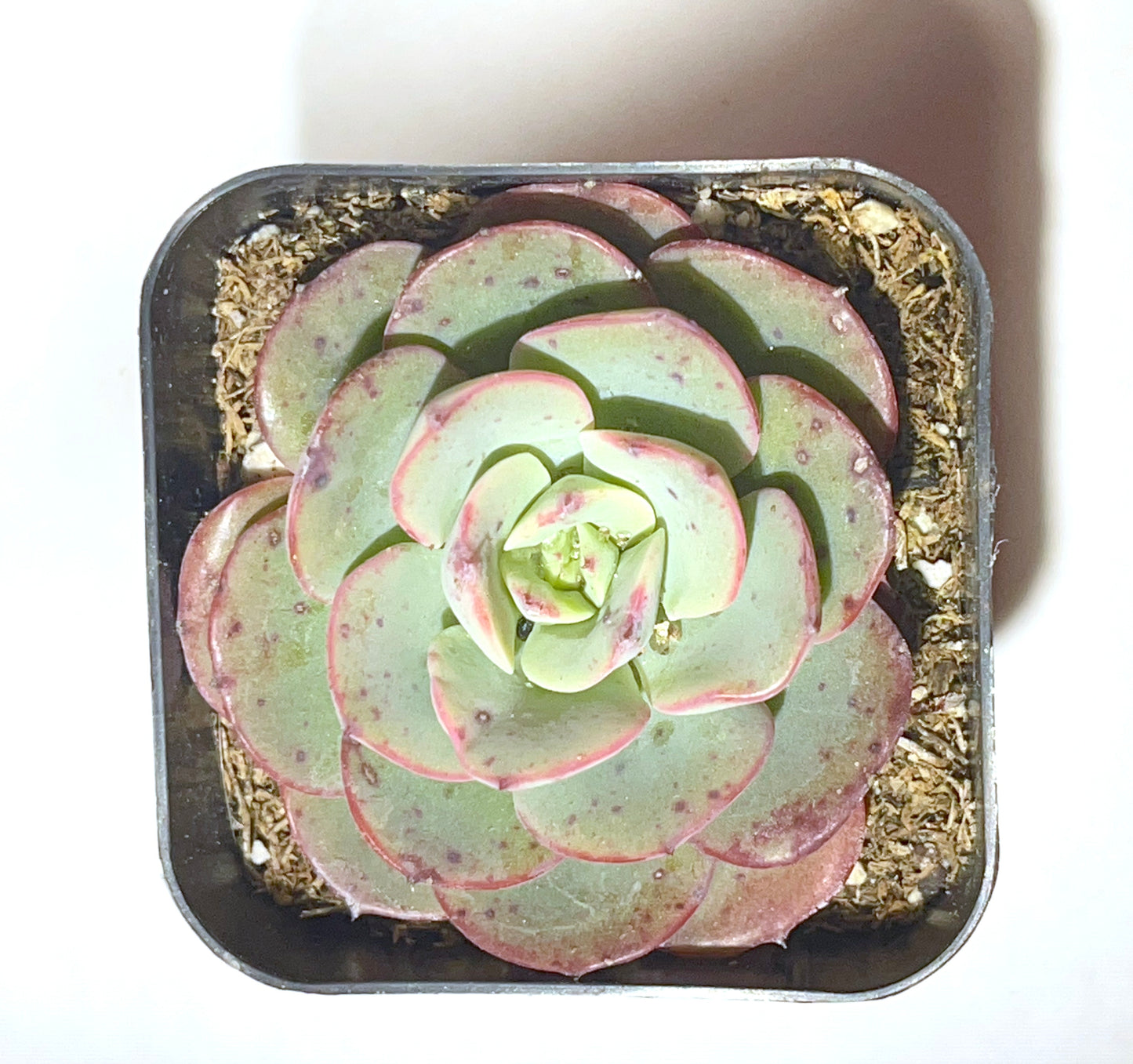1
/
of
1
SEAH
Echeveria - atlantis
Echeveria - atlantis
Regular price
$4.99 USD
Regular price
$7.99 USD
Sale price
$4.99 USD
Unit price
/
per
Couldn't load pickup availability
Echeveria 'Atlantis' is a particularly attractive variety of Echeveria, known for its large, rosette-forming leaves and ease of care. This plant is a popular choice among succulent enthusiasts due to its aesthetic appeal and robustness. Here's a detailed overview of its characteristics, growth habits, maintenance requirements, and reproduction methods:
Morphological Characteristics
- Leaves: Echeveria 'Atlantis' has broad, spoon-shaped leaves that form a large, dense rosette. The leaves are a pale blue-green color with pinkish edges, especially pronounced when the plant is stressed or exposed to sunlight. The leaves may also have a powdery coating of natural wax (farina), which helps protect them from the sun.
- Size: The rosette can grow up to 30 cm (12 inches) in diameter, making it one of the larger Echeveria species. The plant typically remains fairly low to the ground, with the rosette growing to about 15 cm (6 inches) tall.
- Flowers: It produces pink to peach-colored flowers on tall stalks that extend from the rosette in the late spring and early summer. The bell-shaped flowers attract pollinators like bees and hummingbirds.
Growth Habits
- Light: Prefers full sun to partial shade. Adequate sunlight is necessary to maintain the vibrant colors of the leaves and encourage compact growth.
- Temperature: Thrives in warm conditions but is not frost-tolerant. Temperatures below 0°C (32°F) can damage or kill the plant. In colder climates, it's best grown indoors or in a greenhouse during the winter months.
- Water: Like most succulents, Echeveria 'Atlantis' requires minimal watering. Allow the soil to dry out completely between waterings to prevent root rot. Water sparingly during the winter.
Maintenance Points
- Soil: Requires well-draining soil. A cactus or succulent potting mix is ideal.
- Pot: Use a pot with drainage holes to prevent water accumulation at the bottom, which can cause root rot.
- Fertilizer: Fertilize sparingly with a diluted low-nitrogen succulent fertilizer during the growing season (spring and summer) to support growth and flowering.
Reproduction Method
- Offsets: Echeveria 'Atlantis' commonly produces offsets or "pups" around the base of the mother plant, which can be gently separated and repotted to propagate new plants.
- Leaf cuttings: Leaves can be gently twisted off the plant and left to callous over for a few days. Place the calloused end on well-draining soil, and roots will eventually form, followed by a new rosette.
- Seeds: Propagation from seeds is possible but less common and requires more patience. Sow seeds in well-draining soil and keep moist until germination.
Echeveria 'Atlantis' is admired for its decorative appearance and relatively easy care, making it a fantastic addition to succulent gardens, indoor plant collections, and as a part of drought-tolerant landscapes. Its striking rosettes and colorful leaves can add a dramatic touch to any setting.
Share

